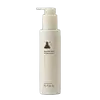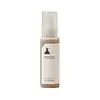What's inside
What's inside
 Key Ingredients
Key Ingredients

 Benefits
Benefits

 Concerns
Concerns

No concerns
 Ingredients Side-by-side
Ingredients Side-by-side

Soymilk Extract
AntioxidantAvena Sativa Protein Extract
Skin ConditioningCaprylic/Capric Triglyceride
MaskingButylene Glycol
HumectantGlycerin
Humectant1,2-Hexanediol
Skin ConditioningNiacinamide
SmoothingWater
Skin ConditioningBetaine
HumectantButyrospermum Parkii Butter
Skin ConditioningPolyglyceryl-3 Distearate
EmulsifyingHydroxyethyl Urea
HumectantC9-12 Alkane
SolventCarbomer
Emulsion StabilisingArginine
MaskingDimethiconol
EmollientEthylhexylglycerin
Skin ConditioningMacadamia Ternifolia Seed Oil
EmollientXanthan Gum
EmulsifyingGlyceryl Stearate Citrate
EmollientC13-14 Alkane
SolventDisodium EDTA
Biosaccharide Gum-1
HumectantHydrolyzed Soy Protein
HumectantSoymilk Extract, Avena Sativa Protein Extract, Caprylic/Capric Triglyceride, Butylene Glycol, Glycerin, 1,2-Hexanediol, Niacinamide, Water, Betaine, Butyrospermum Parkii Butter, Polyglyceryl-3 Distearate, Hydroxyethyl Urea, C9-12 Alkane, Carbomer, Arginine, Dimethiconol, Ethylhexylglycerin, Macadamia Ternifolia Seed Oil, Xanthan Gum, Glyceryl Stearate Citrate, C13-14 Alkane, Disodium EDTA, Biosaccharide Gum-1, Hydrolyzed Soy Protein
Hydrolyzed Soy Protein 77%
HumectantPropanediol
SolventWater
Skin ConditioningPanthenol
Skin ConditioningPolyglycerin-3
Humectant1,2-Hexanediol
Skin ConditioningGlycerin
HumectantBifida Ferment Lysate
Skin ConditioningStreptococcus Thermophilus Ferment
HumectantSodium Hyaluronate
HumectantTheobroma Cacao Extract
Skin ConditioningChlorella Vulgaris Extract
Skin ConditioningPentylene Glycol
Skin ConditioningButylene Glycol
HumectantHydroxyethyl Urea
HumectantDiethoxyethyl Succinate
SolventSodium Polyacrylate
AbsorbentAcrylates/C10-30 Alkyl Acrylate Crosspolymer
Emulsion StabilisingTromethamine
BufferingEthylhexylglycerin
Skin ConditioningAllantoin
Skin ConditioningAdenosine
Skin ConditioningSuccinic Acid
BufferingDextrin
AbsorbentGlucose
HumectantFructooligosaccharides
HumectantFructose
HumectantTocopherol
AntioxidantBeta-Glucan
Skin ConditioningXanthan Gum
EmulsifyingHydrolyzed Soy Protein 77%, Propanediol, Water, Panthenol, Polyglycerin-3, 1,2-Hexanediol, Glycerin, Bifida Ferment Lysate, Streptococcus Thermophilus Ferment, Sodium Hyaluronate, Theobroma Cacao Extract, Chlorella Vulgaris Extract, Pentylene Glycol, Butylene Glycol, Hydroxyethyl Urea, Diethoxyethyl Succinate, Sodium Polyacrylate, Acrylates/C10-30 Alkyl Acrylate Crosspolymer, Tromethamine, Ethylhexylglycerin, Allantoin, Adenosine, Succinic Acid, Dextrin, Glucose, Fructooligosaccharides, Fructose, Tocopherol, Beta-Glucan, Xanthan Gum
 Reviews
Reviews

Ingredients Explained
These ingredients are found in both products.
Ingredients higher up in an ingredient list are typically present in a larger amount.
1,2-Hexanediol is a synthetic liquid and another multi-functional powerhouse.
It is a:
- Humectant, drawing moisture into the skin
- Emollient, helping to soften skin
- Solvent, dispersing and stabilizing formulas
- Preservative booster, enhancing the antimicrobial activity of other preservatives
Butylene Glycol (or BG) is used within cosmetic products for a few different reasons:
Overall, Butylene Glycol is a safe and well-rounded ingredient that works well with other ingredients.
Though this ingredient works well with most skin types, some people with sensitive skin may experience a reaction such as allergic rashes, closed comedones, or itchiness.
Learn more about Butylene GlycolEthylhexylglycerin (we can't pronounce this either) is commonly used as a preservative and skin softener. It is derived from glyceryl.
You might see Ethylhexylglycerin often paired with other preservatives such as phenoxyethanol. Ethylhexylglycerin has been found to increase the effectiveness of these other preservatives.
Glycerin is already naturally found in your skin. It helps moisturize and protect your skin.
A study from 2016 found glycerin to be more effective as a humectant than AHAs and hyaluronic acid.
As a humectant, it helps the skin stay hydrated by pulling moisture to your skin. The low molecular weight of glycerin allows it to pull moisture into the deeper layers of your skin.
Hydrated skin improves your skin barrier; Your skin barrier helps protect against irritants and bacteria.
Glycerin has also been found to have antimicrobial and antiviral properties. Due to these properties, glycerin is often used in wound and burn treatments.
In cosmetics, glycerin is usually derived from plants such as soybean or palm. However, it can also be sourced from animals, such as tallow or animal fat.
This ingredient is organic, colorless, odorless, and non-toxic.
Glycerin is the name for this ingredient in American English. British English uses Glycerol/Glycerine.
Learn more about GlycerinHydrolyzed Soy Protein is a vegan protein made to mimic hydrolyzed collagen. It is created from soy, or glycine soja.
This ingredient is a humectant, meaning it helps hydrate the skin by binding to water. According to a manufacturer, it is also a great hair conditioner.
Read more about hydrolyzed collagen here.
Learn more about Hydrolyzed Soy ProteinWater. It's the most common cosmetic ingredient of all. You'll usually see it at the top of ingredient lists, meaning that it makes up the largest part of the product.
So why is it so popular? Water most often acts as a solvent - this means that it helps dissolve other ingredients into the formulation.
You'll also recognize water as that liquid we all need to stay alive. If you see this, drink a glass of water. Stay hydrated!
Learn more about WaterXanthan gum is used as a stabilizer and thickener within cosmetic products. It helps give products a sticky, thick feeling - preventing them from being too runny.
On the technical side of things, xanthan gum is a polysaccharide - a combination consisting of multiple sugar molecules bonded together.
Xanthan gum is a pretty common and great ingredient. It is a natural, non-toxic, non-irritating ingredient that is also commonly used in food products.
Learn more about Xanthan Gum